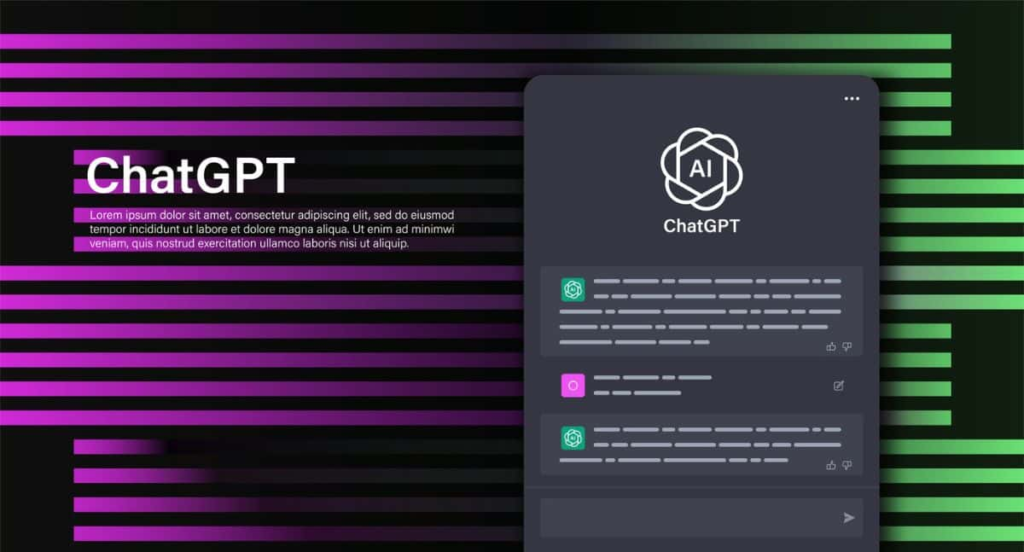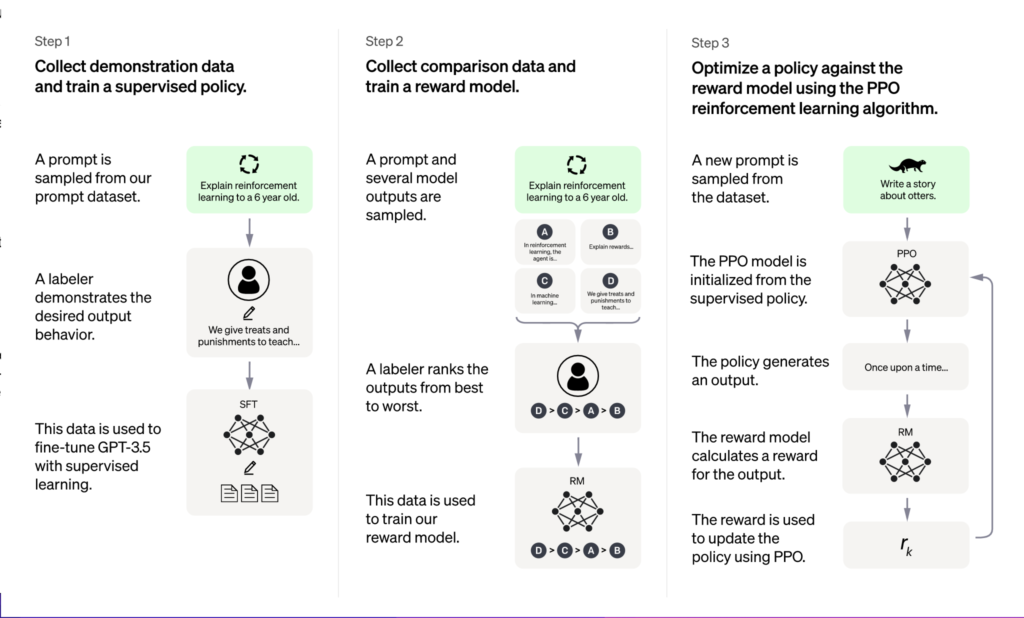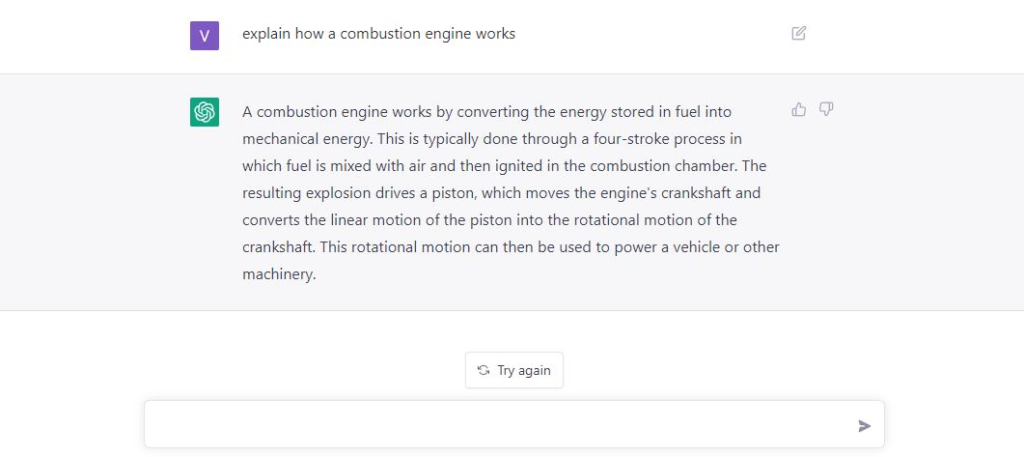Let’s face it, chatbots, have been seeing the popularity nothing has ever seen lately. Everyone’s jumping on the hype train to take a cent out of it. The thing is, all this started with ChatGPT. With its inception, people started using it for everything, they are even using ChatGPT to make money. The reason why it got so popular is mostly because it can handle multiple conversations simultaneously, provide instant responses, and offer personalized recommendations. On top of this, you can put it on your website, messaging platforms, social media, and integrate wherever you want.
Even businesses have recognized the benefits of chatbots in improving customer service, reducing response times, and enhancing overall user experience. Chatbots powered by AI models like ChatGPT have revolutionized the way companies interact with their customers.Now, this brings a ton of opportunities, including using ChatGPT to make money. It’s easier said than done because, like, how to use ChatGPT to make money? Is it really possible? Let’s see, shall we?

What is ChatGPT?
ChatGPT is an advanced language model developed by OpenAI. It is powered by GPT-3 (Generative Pre-trained Transformer 3), which is a state-of-the-art deep learning model trained on a vast amount of text data. ChatGPT is specifically designed to generate human-like responses in natural language conversations.
ChatGPT can understand and create text in a conversational manner, making it a valuable tool for a wide range of applications. It is capable of answering questions, giving out recommendations, engaging in interactive storytelling, and much more. With its ability to generate coherent and contextually relevant responses, ChatGPT has gained immense popularity among developers, entrepreneurs, and content creators.
Why Use ChatGPT to Make Money?
Using ChatGPT to make money offers several advantages. Firstly, ChatGPT is a powerful tool that can generate high-quality and relevant responses, making it a valuable asset for various industries. Additionally, ChatGPT allows individuals to automate tasks, provide personalized services, and engage with users efficiently.
Furthermore, ChatGPT eliminates the need for human intervention in certain interactions, saving time and resources for businesses. It can handle repetitive tasks, provide instant support, and scale effortlessly with increased demand. This scalability factor makes ChatGPT an attractive option for individuals looking to monetize their skills and knowledge.
In the following sections, we will explore the capabilities of ChatGPT, discuss different ways to make money using ChatGPT, provide guidance on getting started, and share best practices for successfully monetizing ChatGPT. Whether you’re a developer, content creator, or entrepreneur, this comprehensive guide will help you unlock the potential of ChatGPT and turn it into a lucrative source of income.

How Does ChatGPT Work?
ChatGPT is built upon the GPT-3 model, which is a transformer-based language model. It utilizes a deep learning architecture that consists of multiple layers of self-attention mechanisms to understand and generate text. The model is trained on a massive dataset that encompasses a wide range of internet text, allowing it to learn patterns, grammar, and context.
At its core, ChatGPT works by taking an input prompt or message and generating a response based on the context and information it has learned during training. The model predicts the most likely next word or phrase based on the given context and generates a coherent and contextually relevant response.
The training process of ChatGPT involves exposing the model to vast amounts of text data and fine-tuning it using reinforcement learning. This helps the model develop a sense of language, semantics, and context, enabling it to generate human-like responses.
Exploring GPT-3’s Capabilities
GPT-3, the underlying model of ChatGPT, boasts impressive capabilities that make it suitable for a wide range of applications. Some of the notable capabilities of GPT-3 include:
- Natural Language Understanding: GPT-3 can comprehend complex and nuanced language, understanding context, grammar, and meaning in a conversational manner.
- Contextual Reasoning: GPT-3 has the ability to reason and make decisions based on the given context. It can provide relevant and logical responses by considering the entire conversation history.
- Knowledge Extraction: GPT-3 is proficient at extracting knowledge from its training data and can provide informative answers to questions or queries.
- Creative Writing: GPT-3 can generate creative and engaging text, making it suitable for storytelling, content creation, and generating unique ideas.
- Translation and Summarization: GPT-3 can translate text between different languages and summarize lengthy passages, making it useful for language-related tasks.
- Task Automation: GPT-3 can automate repetitive tasks by generating responses or performing specific actions based on user inputs.
- Personalized Recommendations: GPT-3 can provide personalized recommendations based on user preferences and historical data, enhancing user experiences in various domains.
Limitations of ChatGPT
While ChatGPT is an impressive language model, it does have certain limitations that are important to consider. Some of these limitations include:
- Lack of Real-Time Context. ChatGPT does not have a memory of the conversation beyond a limited context window. It does not retain information from previous interactions, which can lead to inconsistencies or misunderstandings in longer conversations.
- Tendency to Produce Plausible but Incorrect Answers. GPT-3 has a tendency to generate responses that may sound plausible but are factually incorrect. It relies solely on the patterns it learned during training and may not always provide accurate information.
- Sensitive to Input Phrasing. The way a question or prompt is phrased can significantly impact the response generated by ChatGPT. Small changes in wording can lead to different outcomes, requiring careful formulation of queries to obtain desired results.
- Inability to Clarify Ambiguous Queries. If a query is ambiguous or lacks specificity, ChatGPT may struggle to provide an accurate response. It is important to provide clear and concise instructions to obtain the desired information.
Despite these limitations, ChatGPT remains a powerful tool for generating human-like responses and can be effectively utilized to make money in various ways. In the next section, we will explore different avenues for monetizing ChatGPT and discuss how you can leverage its capabilities to generate income.
Ways to Make Money with ChatGPT and Using ChatGPT to Make Money

ChatGPT opens up numerous opportunities for individuals to monetize their skills and knowledge. Its ability to generate human-like responses and engage in natural language conversations makes it a valuable tool for a variety of applications. Here are some of the ways you can leverage ChatGPT to make money.
Content Creation and Blogging
With ChatGPT, you can automate content creation and enhance your blogging efforts. The model can generate unique ideas, brainstorm topics, and even write blog posts or articles based on specific prompts. By using ChatGPT as a writing assistant, you can save time and produce high-quality content more efficiently.
Additionally, you can offer content creation services to businesses or individuals who require regular blog posts, social media content, or product descriptions. ChatGPT can help you generate engaging and SEO-friendly content that meets the specific needs and preferences of your clients.
Virtual Assistance and Customer Support
ChatGPT can serve as a virtual assistant, handling customer inquiries, providing support, and automating routine tasks. You can integrate ChatGPT into websites, messaging platforms, or support systems to offer instant assistance to users.
By creating a chatbot powered by ChatGPT, you can provide 24/7 customer support, address frequently asked questions, and guide users through various processes. This can help businesses save on support costs and provide a seamless user experience.
Language Tutoring and Translation Services
Leveraging ChatGPT’s language capabilities, you can offer language tutoring services or provide translation assistance. ChatGPT can engage in conversations, help learners practice their language skills, and offer real-time feedback.
Furthermore, you can develop language translation services by integrating ChatGPT into translation platforms. It can assist in translating text between different languages, ensuring accuracy and fluency in communication.
Creating Interactive Stories and Games
ChatGPT can be used to create interactive storytelling experiences or text-based games. By leveraging its ability to generate contextually relevant responses, you can develop captivating narratives that engage users in immersive storytelling adventures.
These interactive stories can be monetized through subscriptions, in-app purchases, or even crowdfunding platforms. Users can explore different storylines, make choices, and have an interactive dialogue with the characters, providing a unique and engaging experience.
Providing Personalized Recommendations
ChatGPT’s capability to understand user preferences and provide personalized recommendations opens up opportunities in various domains. You can develop recommendation systems for products, services, or even personalized learning resources.
By analyzing user data and employing ChatGPT’s decision-making abilities, you can offer tailored recommendations that match individual preferences. This can help businesses drive sales, improve user satisfaction, and increase customer engagement.
In the next section, we will delve into the key steps required to get started with ChatGPT and monetize its capabilities effectively.
Getting Started with Using ChatGPT to Make Money
To get started with ChatGPT and monetize its capabilities, there are several key steps you need to follow. From choosing the right platform or API to setting up your environment and training your model, each step plays a crucial role in ensuring the success of your ChatGPT venture. Let’s explore these steps in detail:
Choosing the Right Platform or API
The first step is to choose the platform or API that best suits your needs. OpenAI offers various options for accessing ChatGPT, including the OpenAI API, which provides a simple interface to interact with the model, and the OpenAI Playground, which allows you to experiment with ChatGPT in a user-friendly environment.
Consider your requirements, budget, and technical expertise when selecting a platform or API. Evaluate factors such as pricing, scalability, customization options, and integration capabilities to make an informed decision.
Setting Up Your ChatGPT Environment
Once you’ve selected a platform or API, it’s time to set up your ChatGPT environment. This typically involves creating an account, configuring API keys, and familiarizing yourself with the platform’s documentation and guidelines.
Ensure that you have a stable internet connection and the necessary hardware to support your ChatGPT activities. It’s also essential to have a development environment or text editor that allows you to write and test code efficiently.
Training Your ChatGPT Model
Training a ChatGPT model requires careful consideration of your specific use case and the data you want the model to learn from. While fine-tuning is not available for ChatGPT, you can still train the model on custom datasets to improve its performance in specific domains.
Prepare a dataset that aligns with your desired use case and train the model using techniques such as supervised fine-tuning or reinforcement learning. The training process involves feeding the model with input-output pairs and iteratively adjusting its parameters to improve performance.
Fine-tuning for Specific Use Cases
Although fine-tuning is not directly available for ChatGPT, you can still leverage transfer learning techniques to adapt the model for specific use cases. By training the model on a domain-specific dataset or incorporating task-specific prompts, you can enhance its performance in targeted areas.
Experiment with different fine-tuning approaches, evaluate the results, and iterate on the process to optimize the model for your desired use case. Keep in mind that fine-tuning may require additional computational resources and expertise in machine learning.
Integrating ChatGPT into Your Application
To monetize ChatGPT effectively, you need to integrate it into your application or service. This involves designing a user-friendly interface, setting up APIs or webhooks to communicate with the model, and ensuring a seamless user experience.
Consider the specific requirements of your application, such as security, scalability, and privacy. Implement robust error handling, input validation, and user feedback mechanisms to deliver a reliable and engaging experience to your users.
In the next section, we will explore best practices for successfully monetizing your ChatGPT services. From building trust and credibility to scaling your business, these practices will help you maximize your earning potential with ChatGPT.
Best Practices for Monetizing and Using ChatGPT to Make Money

Monetizing ChatGPT effectively requires a strategic approach and the implementation of best practices. By following these practices, you can build trust, establish credibility, provide excellent customer experience, and scale your ChatGPT business. Let’s explore these practices in detail:
Building Trust and Establishing Credibility
Building trust is essential when offering services powered by ChatGPT. To establish credibility and gain the trust of your users, consider the following:
- Transparency. Be transparent about the limitations of ChatGPT and make it clear that it is an AI-powered tool. Set realistic expectations about its capabilities to avoid misleading your users.
- Accuracy and Reliability. Strive to provide accurate and reliable information to your users. Fact-check responses generated by ChatGPT and ensure that the information provided is up-to-date and trustworthy.
- Privacy and Data Security. Assure your users that their data and conversations are handled with utmost care and adhere to applicable privacy regulations. Implement robust security measures to protect user information.
Pricing Your Services
Determining the right pricing strategy for your ChatGPT services is crucial for monetization. Consider the following factors when setting your pricing:
- Value Proposition. Assess the unique value your ChatGPT services provide to users. Consider the time saved, convenience, and quality of responses when determining the pricing structure.
- Market Research. Conduct market research to understand pricing trends in your industry. Analyze what competitors are charging for similar services and determine if you want to offer competitive pricing or position yourself as a premium service.
- Pricing Models. Explore different pricing models, such as pay-per-use, subscription-based, or tiered pricing. Choose a model that aligns with your business goals and provides flexibility to accommodate different user needs.
Marketing and Promoting Your Business
Effective marketing and promotion are key to attracting users and generating revenue. Consider the following strategies to market your ChatGPT business:
- Content Marketing. Create valuable content related to your ChatGPT services. Publish blog posts, tutorials, or case studies that demonstrate the benefits and use cases of your services. Optimize your content for search engines to improve visibility.
- Social Media Presence. Establish a strong presence on relevant social media platforms. Share informative and engaging content, interact with your audience, and leverage social media advertising to reach a wider audience.
- Partnerships and Collaborations. Collaborate with influencers, industry experts, or complementary businesses to expand your reach. Seek partnerships that can help promote your ChatGPT services to their existing audience.
Providing Excellent Customer Experience
Delivering an exceptional customer experience is crucial for customer satisfaction and retention. Consider the following practices to provide a positive experience:
- Prompt and Personalized Responses. Aim to provide timely and relevant responses to user queries. Customize your ChatGPT implementation to offer personalized experiences that cater to individual user preferences.
- User Feedback and Iteration. Encourage users to provide feedback on their experience with your ChatGPT services. Actively listen to their suggestions and use their feedback to continuously improve your offering.
- Quality Assurance. Regularly monitor and review the responses generated by ChatGPT to ensure accuracy and quality. Implement quality control measures and address any issues promptly to maintain a high standard of service.
Scaling Your ChatGPT Business
To scale your ChatGPT business and maximize your earning potential, consider the following strategies:
- Automation and Optimization. Automate repetitive tasks and optimize your workflows to handle a larger volume of user interactions. Use tools and technologies that can help you streamline your operations and efficiently manage user requests.
- Upselling and Cross-selling. Explore opportunities to upsell or cross-sell additional services or features to your existing user base. Identify user needs and offer relevant upgrades or add-ons to increase revenue per user.
- Expanding Your Offerings. Continuously explore new use cases and industries where ChatGPT can be applied. Expand your service offerings to cater to a broader audience and tap into new markets.
By implementing these best practices, you can effectively monetize your ChatGPT services and create a sustainable and profitable business. In the next section, we will conclude our comprehensive guide on using ChatGPT to make money and summarize the key takeaways from this blog post.




